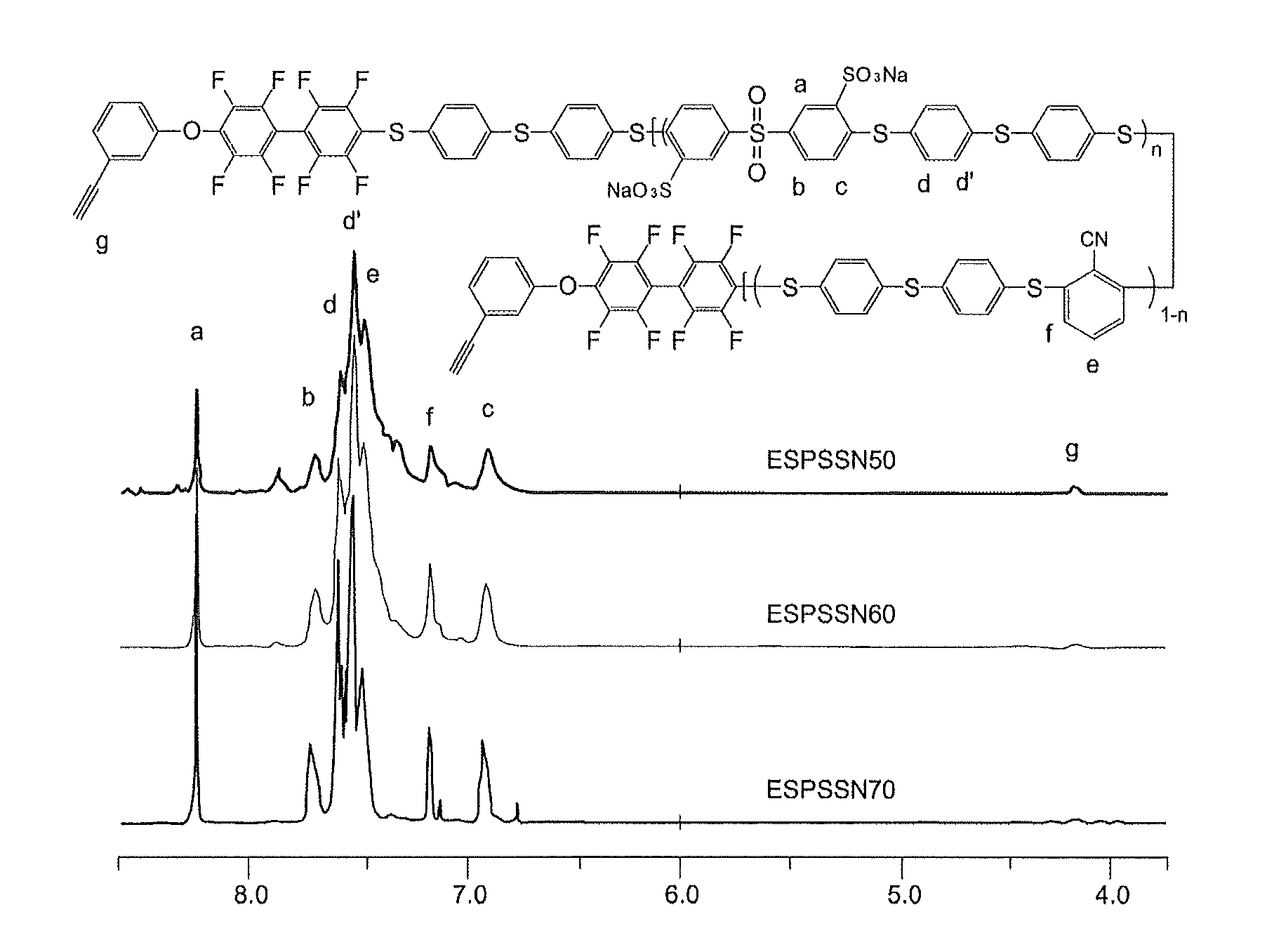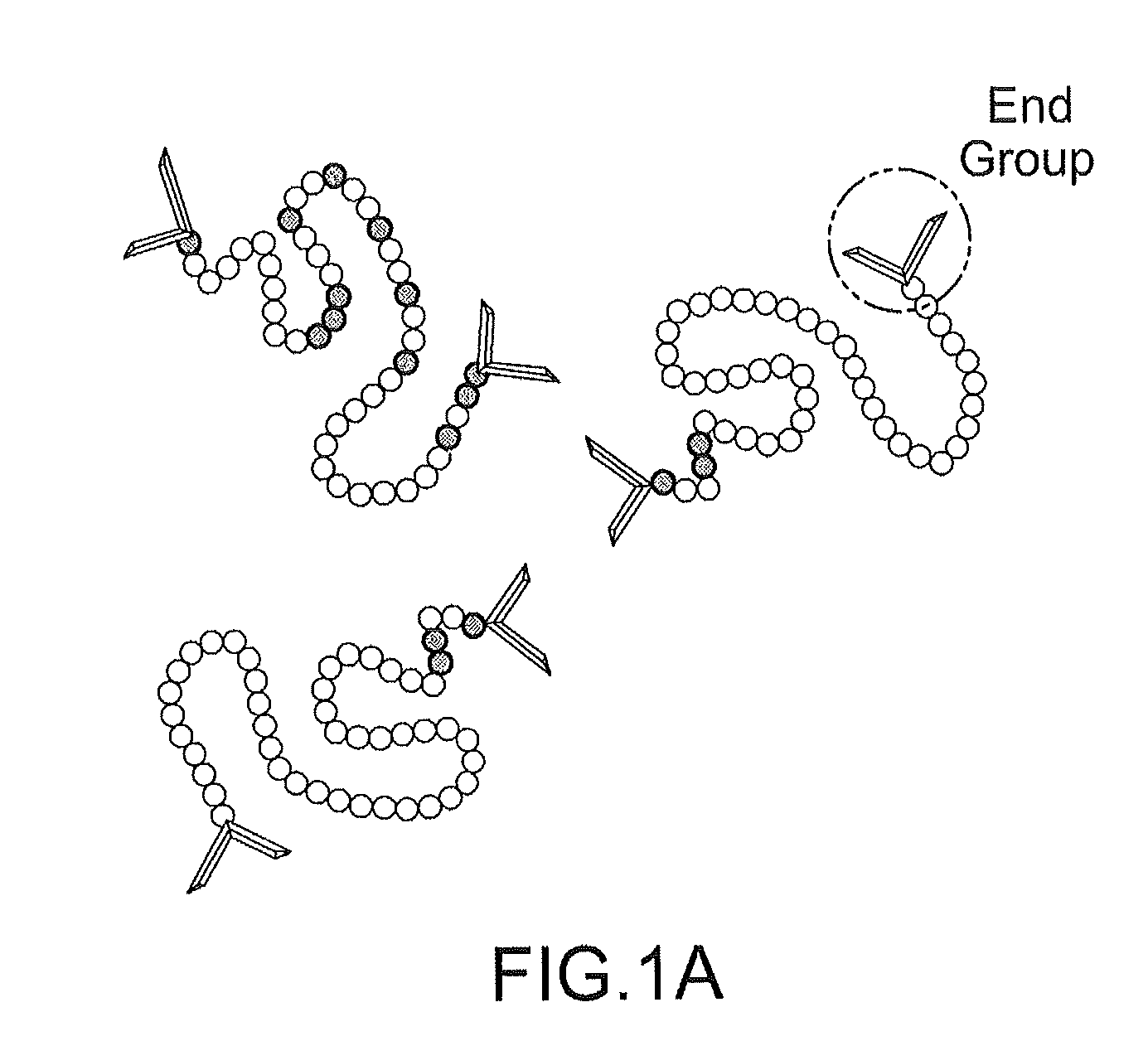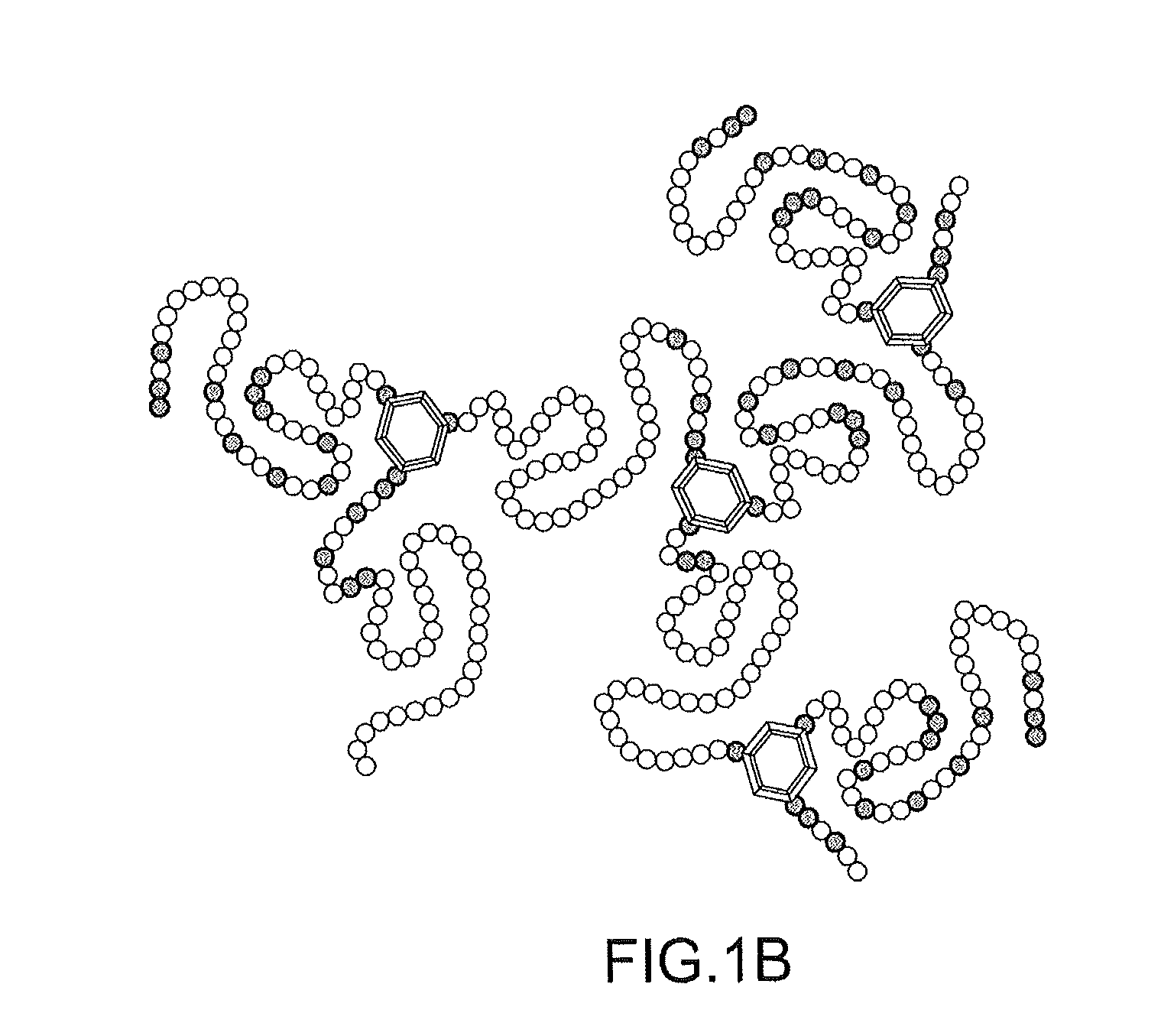Sulfonated poly(phenylene sulfide sulfone nitrile) and membrane for fuel cell thereof
a technology of phenylene sulfide sulfone and sulfonated polymer, which is applied in the field of sulfonated poly (phenylene sulfide sulfone nitrile) and a polymer electrolyte membrane, can solve the problems of lowering fuel cell performance, increasing moisture content and dimensional changes, and electrolyte membranes showing only a partial improvement in physical properties, etc., to achiev
- Summary
- Abstract
- Description
- Claims
- Application Information
AI Technical Summary
Benefits of technology
Problems solved by technology
Method used
Image
Examples
preparation example
Synthesis of Formula 1
[0056]In a 4-neck flask, 4,4′-thiobisbenzenethiol, 3,3′-disulfonated-4,4′-dichlorodiphenyl sulfone and 2,6-dichlorobenzonitrile were dissolved in DMAc by using potassium carbonate as a catalyst. After installing a Dean-Stark trap and a condenser on the 4-neck flask, the reaction was carried out at a temperature of 140 to 150° C., and water generated thereby was removed by using toluene. After water and toluene were completely removed, a polymerization reaction was continued at 160° C. or higher. To the reaction solution was added a decafluorobiphenyl solution dissolved in DMAc, followed by a reaction at 120° C. or lower, thereby to synthesize decafluorobiphenyl at the ends of the polymer. An ethynylphenol solution was added to the resulting solution to synthesize a polymer having a triple bond at its ends, followed by a reaction at 120° C. or lower. Thus synthesized polymer solution was precipitated in a mixed solution of water and isopropanol, the polymer prec...
examples 1-3
Preparation of a Polymer Electrolyte Membrane through Cross-Linking
[0058]The dried sulfonated copolymer was dissolved in DMAc to prepare a solution at a concentration of 10 to 15 wt %. The resulting solution was subjected to casting on a glass plate, followed by drying at 120° C. Thus obtained polymer membranes having a sulfonation degree of 50, 60 and 70, respectively, were heated at a temperature of 220 to 280° C. to induce cross-linking between their ends, thereby to obtain membranes of Example 1 (50 of sulfonation degree), Example 2 (60 of sulfonation degree), and Example 3 (70 of sulfonation degree). Each membrane of Examples 1 to 3 was soaked in a 1.0 M H2SO4 solution for 2 hours and washed with distilled water for 2 hours, thereby to obtain H+ type electrolyte membranes of Examples 1 to 3.
PUM
| Property | Measurement | Unit |
|---|---|---|
| temperature | aaaaa | aaaaa |
| temperature | aaaaa | aaaaa |
| thickness | aaaaa | aaaaa |
Abstract
Description
Claims
Application Information
 Login to View More
Login to View More - R&D
- Intellectual Property
- Life Sciences
- Materials
- Tech Scout
- Unparalleled Data Quality
- Higher Quality Content
- 60% Fewer Hallucinations
Browse by: Latest US Patents, China's latest patents, Technical Efficacy Thesaurus, Application Domain, Technology Topic, Popular Technical Reports.
© 2025 PatSnap. All rights reserved.Legal|Privacy policy|Modern Slavery Act Transparency Statement|Sitemap|About US| Contact US: help@patsnap.com



